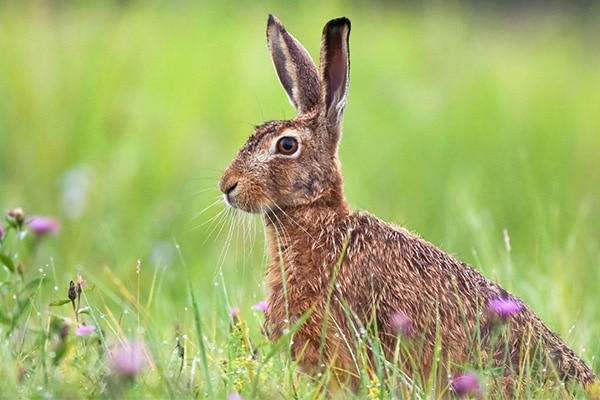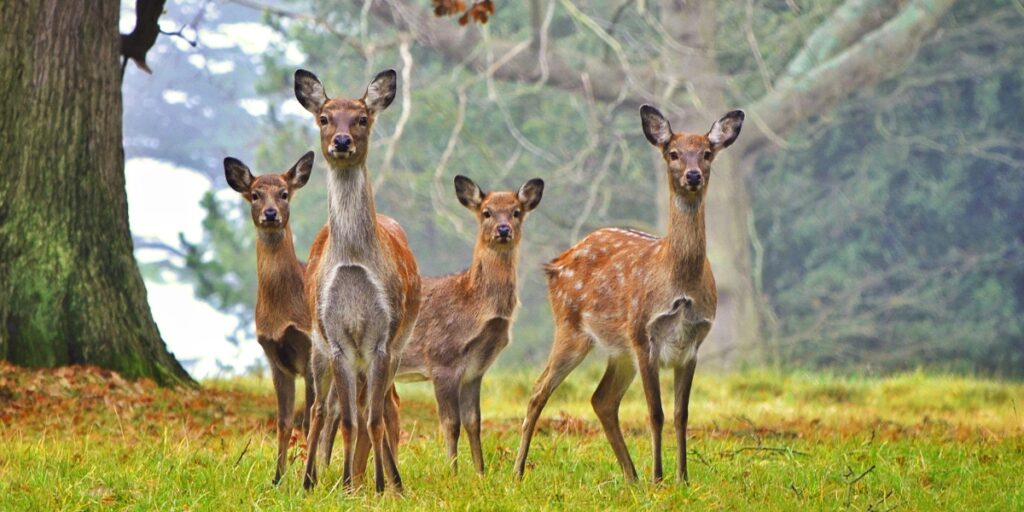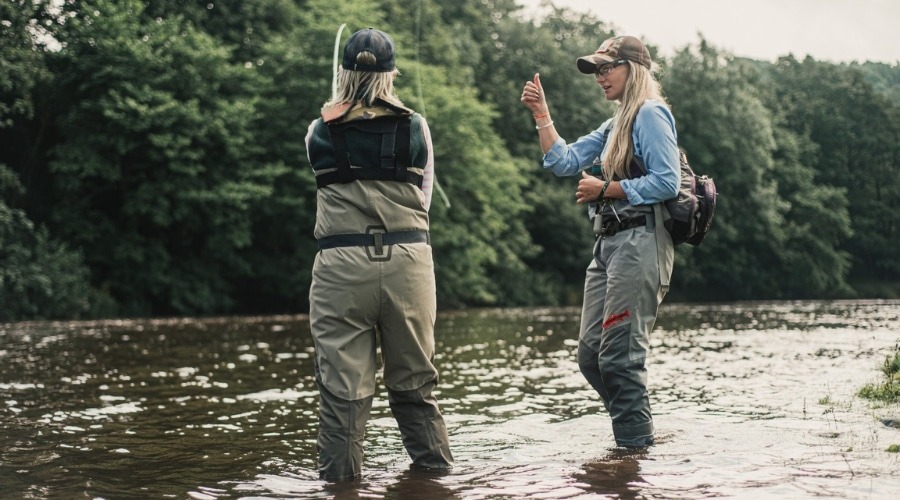
Challenges for shooting in animal welfare shake-up
Read Conor O’Gorman’s blog following the inclusion of plans for new animal welfare legislation in the Queen’s speech in parliament yesterday.
Get information on the legal shooting season for mammals and birds in the UK.
Apply for funding for your project or make a donation today
Comprehensive information and advice from our specialist firearms team.
Everything you need to know about shotgun, rifle and airgun ammunition.
Find our up-to-date information, advice and links to government resources.
Everything you need to know on firearms law and licensing.
All the latest news and advice on general licences and how they affect you.


With daylight hours extending rapidly, temperatures warming and the countryside full of life, the roe buck season is a highlight of the deer stalker’s year. But what are the key challenges and focal points? Will Pocklington shares his thoughts.
After months of drab dormancy and plugging away at the doe cull, there’s a newness to springtime and the first part of the roe buck season that is undeniably uplifting. The countryside is waking up; a flush of verdant growth adorns the hawthorn and hazel, and the best of the bluebells is just around the corner. We’re still a way off the dusty stubbles of the rut, but with the lengthening days and a palpable sense of activity in the natural world, it’s one of my favourite times to be out stalking.
Much of the allure, I think, comes from the sense of discovery. The groundwork begins in winter when the woods and hedgerows are a bare and skeletal tangle, cover is low, and the opportunity to build a picture of what’s about is ripe. While concentrating on the females, we take note of the bucks we see – the kids, those in their prime, and the ‘past it’. Depending on how familiar we are with a piece of ground, we might start forming an idea of priority animals to take come the season.
Even then, there are still lots of questions to be answered in spring. How are the youngsters encountered during the doe season faring? What else has moved in? What about the old boy with the heavy, sloping coronets that hasn’t been seen for a while?

It may be considered a ‘reward’ for persistence in the short days of winter, where the bulk of the deer manager’s work sits, but those serious about deer management will invest a great deal of thought into their approach to roe buck stalking, too. By working out roughly how many young, middle-aged and old bucks there may be, we lay the foundations for a selective approach. The condition of the deer, coat changes, antler cleaning and age structures become focal points.
We also take a slightly different approach to preparation. All of a sudden there’s a chance to squeeze in a stalk after work and, for many of us, there’s a shift in mindset. It’s not winter, so we can shed a layer or two, but it is the UK in spring so the weather can change rapidly. Breathable clothing and a consolidated kit-list take on new value, particularly if we are planning a quick turnaround at the end of the working day to get away from the keyboard and into the woods.
Establishing the territories of different animals is, I find, a good place to start. We start to think about how big an area that buck is holding, whether there is any overlap with other males, and which specimens will keep the younger chaps – which are most notorious for fraying young trees – at bay where it matters most. Heaviness of frame, delicacy of gait and antlers all feed into thoughts on ages and decisions on which bucks to leave alone.
For the last four years, we’ve used trail cameras on the estate where I stalk to offer further insight. With a little bit of extra effort, we now have footage of numerous bucks, from consecutive summers, which we can identify quite easily. Some we have watched grow from kids – the pearling, mass and form of their antlers altering slightly each year, depending on how well they have fared.
Working out where we might find particular animals in different conditions is equally enjoyable and a natural next step. There’s the wind to think about, sun traps throughout the day, the best of the browsing, and the secluded nooks and crannies where shelter and peace prevail.
But for creatures of habit, roe bucks have a real knack for keeping us on our toes. Either way, there’s something deeply arresting about that moment we first spy their tawny or chestnut coats. Perhaps it’s his caudal patch that gives him away, the twitch of an ear or the twist of an antler. You can see these things a thousand times and they don’t lose their magic.

As the most widely distributed of the six deer species found wild in the UK, roe can be found in a range of habitat types, and different landscapes pose different challenges. I can only speak for those similar to the classic rolling farmland of the Lincolnshire Wolds – with thick hedgerows, blocks of woodland, grazing pastures and cosy spinneys – where before long bolting crops and headlands will all but hide Capreolus capreolus in many places.
But what of their pursuit on the open hill in the north of England, the fens of East Anglia, the wide-open arable fields of Wiltshire, or dense coniferous plantations of Scotland? Dead ground, other countryside interests and disturbance are all there to tackle and consider. The roe has adapted and so must we.
As well as these factors, of course, we can’t forget the early mornings and late nights to contend with. Or the inevitable flies that will bother carcasses that could, a few months back, have been left to hang and cool while a stalk continued. The 3am start is as common as temperatures over 20C; you’ll need an understanding family as much as you’ll need a well-thought-through process for chilling down shot deer in short order.
One of the true joys of roe stalking in the spring and summer, I think, is being able to get so close to our quarry. That extra cover, while it may hide bucks – and other animals that will raise the alarm and give away our position – has its uses. Coupled with the species’ tendency to loiter and remain in the same position for some time when relaxed (as opposed to muntjac, for example, which are very mobile by comparison), this makes for exciting stalking.
For most of us, the classic ‘spot and stalks’ from several hundred yards away surely represent the cream of it. And, certainly in the lowlands, roe bucks tend to offer the best chance of such a scenario. It is stalking in its purest form: spy a potential, plan the route in, close the gap, hope for a bit of luck, and enjoy the encounter.

I’ve had instances where I’ve been ten yards from a buck. One memorable encounter the July before last, I was watching from a hedge with the wind perfectly in my face when a malform roe buck strolled straight towards me until I could have touched him with my quadsticks. In the 20 minutes leading up to that point, after he stood from his slumber and breached the brow of a headland above me, I watched him browse away with not a care in the world, scratching his ears with his cloven hooves.
A little more naive, yearlings can be particularly inquisitive and so are prime candidates for similar episodes. For a while, before I became tired of the extra weight, I’d take a ‘proper’ camera in my roe sack and will never forget a meeting with a young buck on the morning of my birthday a couple of years back. It was particularly bright, and I’d followed the animal into a field of long grass that was waiting to be cut for silage. Just as I thought I’d lost him, he appeared from where he’d vanished and walked straight towards me. I crouched stock-still, the breeze in my favour, and he came within 15 yards just to have a look. I guess he was intrigued by my silhouette. Moments like these, for me, distinguish roe bucks from the rest.
Arguably more captivating than the way they interact with us, is how roe interact with each other. When stalking bucks in the spring and summer, we put ourselves in prime seats to witness their quirks. While they jostle for territories, we might see them chasing one another, sparring and marking by fraying young trees and scraping at the ground. After the does have given birth to their young in May and July, there’s even the chance of seeing mother and kid(s) pottering between out-of-the-way refuges.
Which leaves us with the rut – that yearly phenomenon that tends to hog the column inches as far as roe are concerned. All of a sudden, our quarry is emboldened by the urge to find a mate and acts with a tell-tale recklessness. Calls can tempt him in silly close, and if the conditions are right, that can be in the middle of the day.

When we stop to write it all down, it’s not hard to see why roe have such a hold on so many of us. In addition to that sense of discovery, the guessing, the close encounters, the changing habits, and the venison, is the knowledge that records of these truly native animals date back to before the Mesolithic period. We’ve been hunting them in one form or another for millennia. Little wonder, really, that our relationship with the species is so deeply rooted.


Read Conor O’Gorman’s blog following the inclusion of plans for new animal welfare legislation in the Queen’s speech in parliament yesterday.

BASC’s assessment-only DSC1 days are now available to book, offering a significant saving on the cost of a traditional DSC1 course.

The first ever BASC Women in Shooting simulated Macnab comes to the beautiful Swinton Estate near Masham in North Yorkshire this October.
Sign up to our weekly newsletter and get all the latest updates straight to your inbox.
© 2025 British Association for Shooting and Conservation. Registered Office: Marford Mill, Rossett, Wrexham, LL12 0HL – Registered Society No: 28488R. BASC is a trading name of the British Association for Shooting and Conservation Limited which is authorised and regulated by the Financial Conduct Authority (FCA) under firm reference number 311937.
BASC Direct Ltd is an Introducer Appointed Representative of Agria Pet Insurance Ltd who administer the insurance and is authorised and regulated by the Financial Conduct Authority, Financial Services Register Number 496160. Agria Pet Insurance is registered and incorporated in England and Wales with registered number 04258783. Registered office: First Floor, Blue Leanie, Walton Street, Aylesbury, Buckinghamshire, HP21 7QW. Agria insurance policies are underwritten by Agria Försäkring.
If you have any questions or complaints about your BASC membership insurance cover, please email us. More information about resolving complaints can be found on the FCA website or on the EU ODR platform.